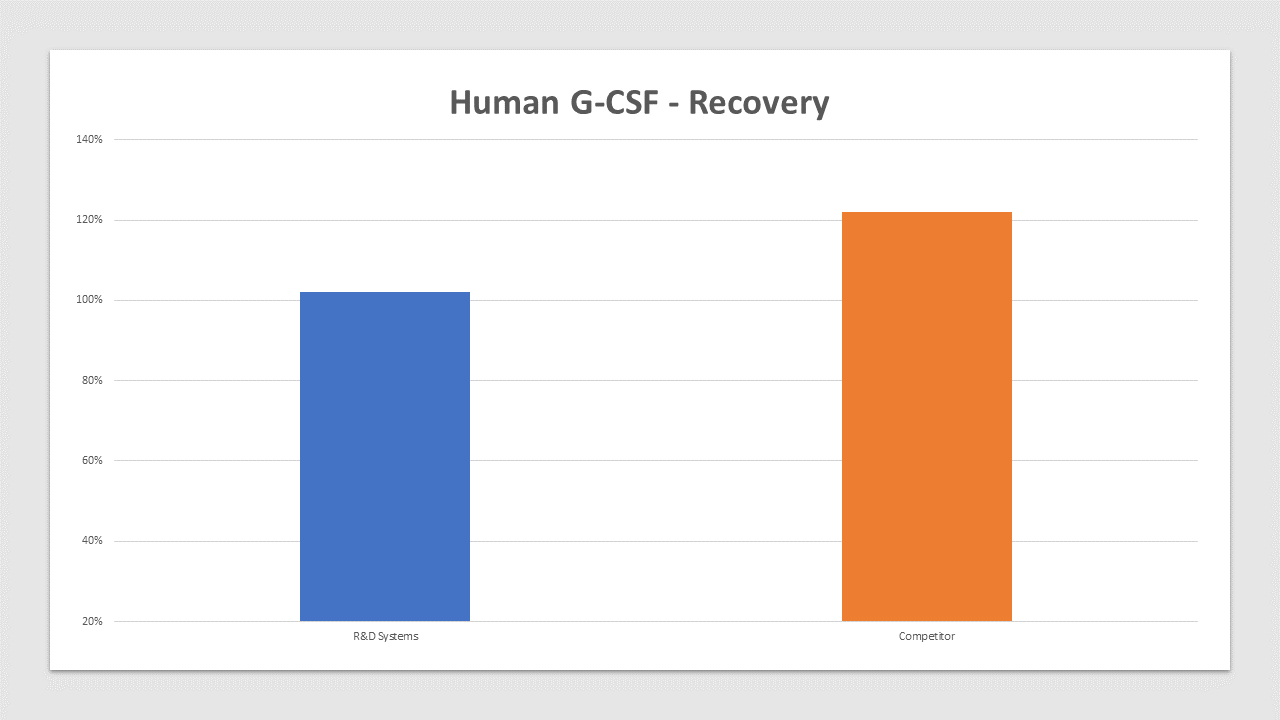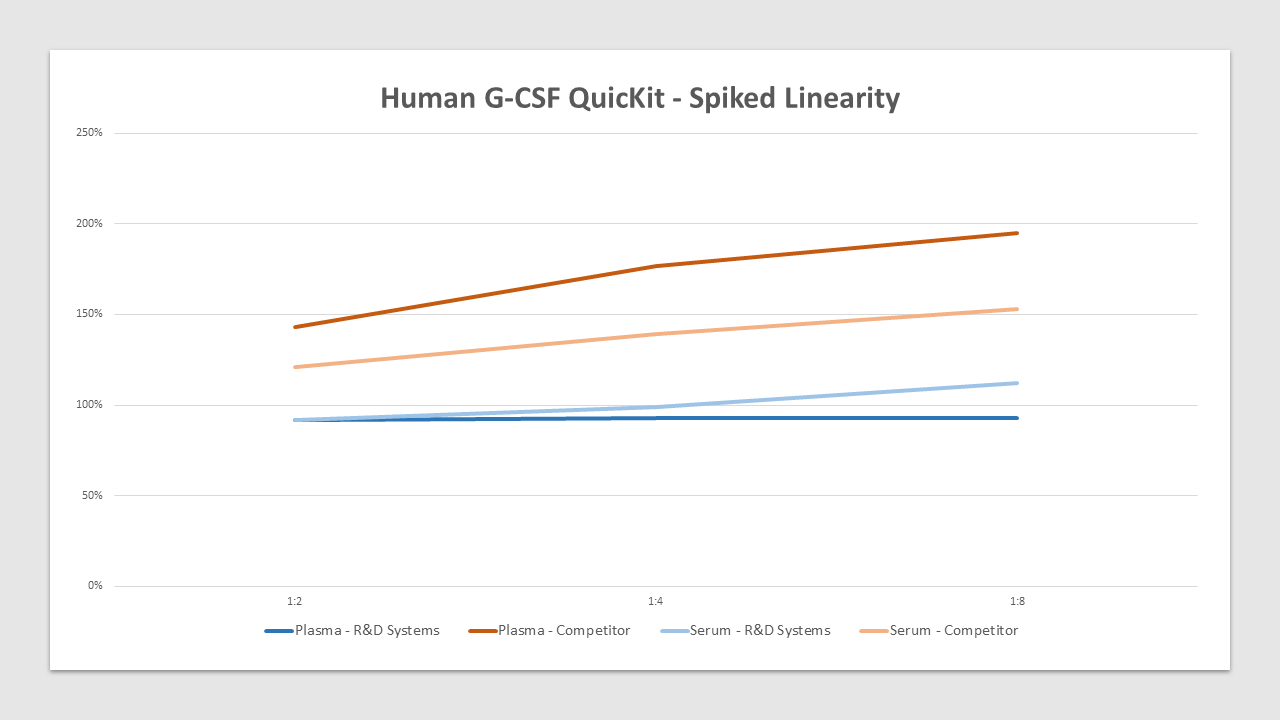Human G-CSF Quantikine QuicKit ELISA Summary
Product Summary
Precision
Cell Culture Supernates, Serum, EDTA Plasma, Heparin Plasma
| Intra-Assay Precision | Inter-Assay Precision | |||
|---|---|---|---|---|
| Sample | 1 | 2 | 1 | 2 |
| n | 20 | 20 | 10 | 10 |
| Mean (pg/mL) | 260 | 1351 | 246 | 1426 |
| Standard Deviation | 3.36 | 26.2 | 27 | 70.9 |
| CV% | 1.3 | 1.9 | 11 | 5 |
Recovery
The recovery of human G-CSF spiked to three levels in samples throughout the range of the assay was evaluated.
| Sample Type | Average % Recovery | Range % |
|---|---|---|
| Cell Culture Supernates (n=4) | 101 | 93-105 |
| EDTA Plasma (n=2) | 102 | 100-106 |
| Heparin Plasma (n=2) | 94 | 90-99 |
| Serum (n=2) | 79 | 77-84 |
Linearity
Scientific Data
 View Larger
View Larger
Human G-CSF QuicKit Recovery Competitor Comparison G-CSF is spiked at three known concentrations throughout the range of the assay and run to measure response of the spiked sample matrix. Culture media recovery is 102% compared to 122% for the top competitor. In spike and recovery experiments, natural samples are spiked with the recombinant target analyte of interest to identify interference caused by sample matrices.
 View Larger
View Larger
Human G-CSF QuicKit Spiked Linearity Competitor Comparison G-CSF is spiked at high concentration in various matrices and diluted with appropriate Calibrator Diluent to produce samples with values within the dynamic range of the assay. The linearity in serum is between 92%-112% compared to 121%-153% for the top competitor. The linearity in plasma is between 92%-93% compated to 143%-195% for the top competitor. Linearity is used to assess matrix effects and accurate measurement of sample values to provide confidence in your results.
Product Datasheets
Preparation and Storage
Background: G-CSF
Granulocyte-colony stimulating factor (G-CSF) is a 24-25 kDa monomeric glycoprotein that regulates the proliferation, differentiation, and activation of hematopoietic cells in the neutrophilic granulocyte lineage. Mature human G-CSF is a 178 amino acid (aa) O-glycosylated protein that contains two intrachain disulfide bridges. In humans, alternate splicing generates a second minor isoform with a 3 aa deletion. Mouse and human G-CSF share 76% aa sequence identity, and the two proteins show species cross-reactivity. G-CSF is produced by activated monocytes and macrophages, fibroblasts, endothelial cells, astrocytes, neurons, and bone marrow stroma cells. In addition, various tumor cells express G-CSF constitutively.
Assay Procedure
These assays utilize an anti-tag coated microplate. Standards, samples, and controls are added to plate, followed by subsequent addition of an antibody cocktail. Following a 1 hour incubation, plates are washed and substrate is added and incubated for 20 minutes. Stop solution is then added and plates are read using a standard microplate reader.

FAQs
No product specific FAQs exist for this product, however you may
View all ELISA FAQsReviews for Human G-CSF Quantikine QuicKit ELISA
There are currently no reviews for this product. Be the first to review Human G-CSF Quantikine QuicKit ELISA and earn rewards!
Have you used Human G-CSF Quantikine QuicKit ELISA?
Submit a review and receive an Amazon gift card.
$25/€18/£15/$25CAN/¥75 Yuan/¥2500 Yen for a review with an image
$10/€7/£6/$10 CAD/¥70 Yuan/¥1110 Yen for a review without an image





